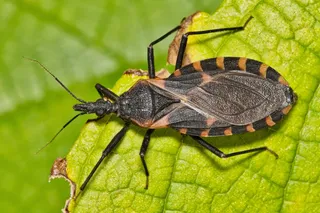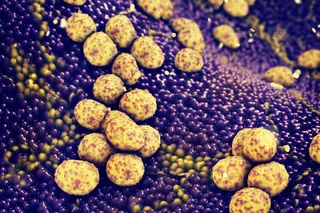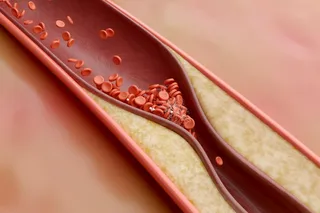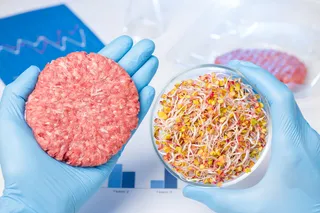The conventional Mendelian model for diploid organisms assumes that the expression of an autosomal allele within an individual should be invariant of its sex of origin, that is, whether it is inherited from the father or the mother. This model is incorrect for a subset of alleles across many taxa, in particular mammals. In 1989 David Haig and Mark Westoby outlined the evolutionary rationale for parent specific gene expression.^1 In 1992 paternal and maternal specific imprinting of the insulin growth factor 2 and insulin growth factor 2 repressor loci (Igf2, Igf2r) in mice confirmed their predictions.^2 Over the last 15 years as many as 200 loci have been identified as being subject to parental specific genomic imprinting.^3 The mechanisms involved are clear at the most basic level, the repression of gene expression via epigenetic mechanisms such as methylation, but the details of the molecular genetic processes are still relatively obscure and mysterious.^4 But perhaps the larger question is why parental specific gene expression, operationally the transformation of a locus to a haploid or monoallelic expressive state, should occur on a particular subset of loci. Fundamentally this is an evolutionary question, and concurrently with the proximate exploration of the molecular mechanisms there has grown a theoretical body of work which explores the ultimate rationale of the emergence of these peculiar molecular systems.
What is the relevance of theory to biology? The examination of biological questions has traditionally occurred on various methodological and organizational levels. Darwin's theory of evolution via natural selection upon heritable variation was proposed without a viable genetic theory. It was 40 years between the publication of The Origin of Species and the emergence of modern genetics, and another 20 years before evolutionary biology integrated the Mendelian framework.^5 Of course, this preceded the work of Francis Crick and James Watson on DNA, so for a generation the Neo-Darwinian Modern Synthesis of evolutionary biology and genetics existed without any understanding of the biochemical nature of genes. These historical precedents show that despite a lack of understanding of mechanistic details, an evolutionary theoretical program can be fruitful in laying the groundwork for future understanding of a whole system, and a cogent set of predictions may serve as the blueprint for a detailed line of work to elucidate proximate causes.
Currently there are three primary theoretical evolutionary explanations for the emergence of genomic imprinting, the "Evolvability Hypothesis," the "Ovarian Time Bomb Hypothesis" and the "Kinship Theory." As the Kinship Theory seems the most well supported and thoroughly developed project, I will focus on it through most of this paper and only introduce the general outlines of the first two theories.
The Evolvability Hypothesis is a model which proposes that genomic imprinting is a mode of transmission which allows genetic variation to be maintained within the population.^6 The rough logic is similar to the reasoning behind the maintenance of sex in complex diploid organisms, the long term fitness of populations which maintain genetic variation by shielding alleles of suboptimal fitness from selection by masking their expression should be greater than populations which allow full biallelic expression and so purge less fit alleles from the population. There are problems with this model in the details. First, one must consider that because parental specific gene expression alternates between active and repressed states when inherited from the mother or father, there is little guarantee of long term masking from selection for a given allele. For example, if one posits that a maternal allele is silent, the probability of that allele being masked from selection via maternal transmission a given number of generations is simply 0.5 to the power of generations under consideration. In other words, the number of generations one may expect to be silenced is rather short, and though this model assumes environmental and other selective pressures change rapidly so as to render suboptimal alleles more optimal over time, such drastic variation seem unrealistic. Additionally, there is the reality that for recessive alleles, which are normally masked by a dominant allele in a diploid organism, genomic imprinting's haploid expression pattern would increase its chances of being exposed to selection. In a conventional panmictic scenario the vast majority of low frequency recessives would be in heterozygote genotypes where they would be masked, while in the context of genomic imprinting one could expect that monoallelic expression would result in these recessives being exposed to selection without the "protection" of a dominant copy of the given gene. In fact, these recessives offer up a much more plausible way of maintaining genetic variation within a population without recourse to genomic imprinting. Additionally, there is the issue that the proponents of the Evolvability Hypothesis make reference to the fitness of groups, which is very difficult to model and justify in most evolutionary genetic systems. The ubiquity of sex suggests that some long term fitness implication of groups might be at play, but the relative paucity of loci which exhibit genomic imprinting seems to weigh against an appeal to such theoretically tendentious paradigms. Finally, in regards to the empirical data the Evolvability Hypothesis has no easy explanations for why such a general fitness advantage (i.e., increased genetic variability) would only manifest on a minuscule fraction of the genome, exhibit a patchy phylogenetic distribution (e.g., be more prominent in mammalian lineage) or predict why paternally inherited copies would be more likely to be over-expressed in relation to maternal copies. In short, such a general solution resting upon shaky theoretical foundations seems unwarranted.^7
The Ovarian Time Bomb Hypothesis is a more specific model. Its rationale is that paternal specific expression is necessary as a failsafe against premature oocyte development and subsequent invasion maternal tissue by trophoblasts.^8 This hypothesis explains why there is a tendency for maternal copies to be repressed and paternal copies to be expressed, and the genes which are evolved in trophoblast development do seem to be under imprinting control. Nevertheless this hypothesis' problem is the inverse of the Evolvability Hypothesis in that it is highly specific. Loci not involved in trophoblast development are assumed to have been imprinted by byproduct mechanisms, perhaps due to their proximity to imprinted loci. Additionally, the hypothesis assumes that ovarian tissue would have higher metastatic potentional when this is not assured. It maybe that male germ cells, sperm, are simply more malignant and so stronger selection works against them. Inactivation of maternal alleles could then have arisen for another reason, while relaxed selection would have allowed the emergence of relatively benign teratomas of oocytes. Perhaps most importantly, there seems to be little difference in imprinting between mammalian lineages with invasive placenta (i.e., subject to trophoblast invasions and tumors) and non-invasive placenta. Finally, the monoallelic imprinting of most somatic tissues must be assumed to be a byproduct of selection against ovarian tumors, but there is strong evidence that loss of heterozygosity is a major selective force which might reduce fitness of the organism with many cells which exhibit such monoallelic expression. In sum, though the Ovarian Time Bomb Hypothesis is not illogical or vague, its specific and precise predictions are met and exceeded to such an extent that it seems unable to account for the wider scope of genomic imprinting.^9
The third and most well developed hypothesis is the Kinship Theory, also termed "Conflict Theory," which is really an extension of the general paradigm of inclusive fitness elucidated by W.D. Hamilton in his famous series of papers in 1964 which outlined the general logic by which altruism could evolve through selection on the level of genes.^10 The logic is straightforward. Consider an individual. This individual is diploid, and so carries two copies of each gene, alleles, inherited from their mother and father. Similarly, their mother and father also carry two copies of each gene, from their own mothers and fathers. The probability of a given allele, one of two copies, being passed to the next generation is ½. An individual is identical by descent on ½ of their alleles from either parent. Similarly, the offspring of a given individual is identical by descent on ½ of their alleles. As grandparents of an individual are at one remove, one is expected to be identical by descent on about ¼ of their alleles from any given grandparent. This is an expectation, you have no guarantee which grandparent's allele you will inherit and sampling variance will likely result in differences of genetic contribution from those in your lineage who one would expect would contribute equitable proportions to your genome. In other words, the probability of identity by descent on most lines of relationship when comparing given loci between two individuals is an expectation only. Nevertheless, evolution works over many generations and across populations, so even though siblings are only expected to be, not necessarily going to be on the sequence level, identical by descent ½ of the time, evolutionarily speaking one assumes this as a deterministic truth as the sampling variance tends to decrease inversely to the square root of the number sampled.
The probability of two alleles on a given locus across generations or between individuals defines the "coefficient of relatedness" between them, r. Because of the haplodiploid nature of hymenoptera genetics Hamilton showed in his 1964 paper how eusociality was a highly plausible arrangement for this taxon because the coefficient of relatedness between sisters, 0.75, was greater than that between mothers and their offspring, 0.5. The logic can be illustrated by a "thought experiment." Consider an allele, A, which encodes a drive to be altruistic to your kin in relation to the coefficient of relatedness, r. If this allele programs one to come to the aid of someone who is near kin then it is "aiding" itself because its presence in said near kin would be directly proportional to r. In contrast, a selfish allele S, would encode a strategy of selfishness to one and all. Of course some of the times that the allele A drove one to help someone who was related to you would be aiding S, but what truly counts is the average over time. If you aided the other individuals a great deal, then the cost to yourself might be compensated by the benefit to them. Why would a benefit to them be relevant? They carry the allele A as well! Formally this is depicted by "Hamilton's Rule," a behavior is favored if B x r > C, where B denotes the "benefit to the other," r is the coefficient of relatedness between the other and oneself and C is the cost to yourself. If one aids someone whose r to oneself is 0.5 so as to increase that individual's fitness by greater than a factor of 2, then even a reduction of one's own fitness to zero is justified as (2 + x) x 0.5 > 1, 1 being the cost to oneself.
Of course there are many simplifying assumptions here. Inbreeding necessarily increases r, and of course there is extremely high sequence level identity of human genomes (for that matter, there is ~98% sequence level identity between chimpanzees and human beings) so the key is relative relatedness and a focus on recent identity by descent as opposed to identity by state or ancestral descent. Nevertheless, the basic logic seems to explain a great deal of the behavior in the animal, and even human, world. But how is this relevant to genomic imprinting? The key is to go beyond one of the implicit simplifying assumptions above, the invariant nature of the parents in the models, or, more precisely, the invariant nature of the father. In a situation where the father varies a great deal, as is common in many mammalian species, the r across maternally and paternally inherited genes in the offspring, from now on denoted madumnal and padumnal alleles, differs. While madumnal alleles still exhibit the canonical cross-sib r of 0.5, the padumnal alleles can be expected to be less than 0.5. The reason is two fold, first, in many mammals mating pairs last only for one breeding season, so siblings are likely to have different fathers. Additionally, in many species which birth litters there is multiple-paternity of the siblings because of multiple matings in a season. This results in an expectation of r being lower across padumnal alleles, and so all things being equal Hamilton's Rule now differs between the maternally and paternally inherited alleles in some cases.^11 An extreme case is between half-siblings who are known to differ in paternity. On their madumnal alleles their r is 0.5, on their padumnal alleles their r is 0, averaging together for the canonical coefficient of relatedness of 0.25. In species where paternity certainty is not known the padumnalr will be proportional to the expectation of paternity identity across siblings.^12
This difference between r results in a host of conflicts across genetic loci. The key for genomic imprinting is that mammals are characterized by relatively high obligate maternal investment and vivaparity results in a basal metabolic cost to the mother for any given offspring. In contrast there is a wide range of paternal investment and certainty. The initial work in genomic imprinting derived from the genetic conflicts that occurred between the fetus and the mother in mammalian species.^13 And to some extent the mother-offspring tug of war for resources is still the crux of the matter. In a situation where pair-bonds are minimal or transient the cost to the father, and ergo, the padumnal alleles, of reductions in future fitness of the mother, ergo, the madumnal alleles, is minimal. Therefore there is a strong incentive for padumnal alleles to induce aggressive acquisition of resources of offspring and transfer of fitness from the mother and to offspring. In contrast, the madumnal alleles are shared between mother and offspring at the value of r 0.5, and between the offspring and future offspring to the value of 0.5, so there is a strong disincentive for the madumnal alleles of the offspring from incurring a catastrophic fitness cost to the mother. In terms of how this plays out on the molecular level the loci which should exhibit genomic imprinting would be those focused on early growth of the fetus and resource allocation to the offspring. This is the general trend one sees in the mouse model, Igf2 the first gene to be implicated in genomic imprinting in mice is a growth factor.^14 Because of the costs of monoallelic expression, vulnerability to loss of heterozygosity and haploinsufficiency, only loci which effect such highly fitness relevant phenotypes should be targeted by genomic imprinting as otherwise the costs to both madumnal and padumnal alleles would be too great. In this fashion the narrow scope of imprinting's genomic impact, as well as its functional biases, are accounted for.
One of the predictions the Kinship Theory of genomic imprinting, which is validated, is that there will be a strong bias toward padumnal expression in an attempt to trigger and induce growth and resource monopolization in its "selfish" drive toward increasing its own fitness irrelevant to the cost of the unrelated mother. But critics have pointed out that in many circumstances where genomic imprinting should not be operative bias still occurs. The reason is that in cases where the probability of paternity is very certain, operationally close to 100%, the madumnal and padumnal alleles have the same interests. Additionally, in such "monandrous" circumstances there is often concomitant male parental investment, so excessive offspring demands incur a cost upon future padumnal alleles. It seems than an implication of Kinship theory would be that madumnal and padumnal alleles would "agree" upon expression levels and exhibit no asymmetry, but this is not so. But this is a fallacious prediction, for what the Kinship Theory predicts is that the total sum dosage should now be agreed upon between the two parental copies, the means by which the dosage occurs (i.e., the proportional contributed via expression from each copy) is irrelevant.^15
To flesh out this phenomenon one must backtrack and consider the evolutionary trajectory via which imprinting occurs. The hypothesis conjectures that over time the padumnal allele increases dosage while the madumnal allele decreases dosage in a species where genetic conflict occurs. Over time the madumnal allele reaches zero expression, that is, it is silenced. At this point the padumnal allele would be assumed to win by default as it would increase dosage to the appropriate level to optimize its own fitness (one assumes to over-expression might be deleterious for a variety of reasons). One must remember that it seems likely that other repressor madumnal alleles would begin to interfere with the unchecked padumnal allele (e.g., Igf2r in most mammals repressing Igf2), but nevertheless, the final evolutionary end state should be alternative expression states for the maternal and paternal origin copies in the offspring. If the life history of the species alters for some reason from a competitive polyandrous to a stable monandrous norm, then the rational for the asymmetry disappears, and the two parental alleles would agree upon dosage. One might imagine that the padumnal allele would at this point begin to reduce its expression levels toward a lower state to increase its own future fitness because it is now tied to the madumnal allele, but this dose not imply that the madumnal allele would increase its own expression as the key is that the sum total of expression be reduced. In this way one can see that the overall implication is that monandrous species derived from a polyandrous state exhibit a host of combinations of genomic imprinting as the competitive tension between the padumnal and madumnal alleles is released. But, there is no positive selection for symmetry so long as the optimal dosage level is maintained. The take home message is that the logical implications of Kinship Theory maybe more circuitous than one might assume upon first examination, and it is important to draw out the full conclusions to test the predictivity of the theory.
Not only does Kinship Theory offer general predictions, it can also serve as a explanatory framework for human pathologies. An important example of this is Prader-Willi Syndrome, (PWS) a malfunction of the expression of the padumnal alleles in the chromosome 15q region.^16 PWS might give us some insights into the nature of coevolution between padumnal and madumnal alleles, as it shows us the development of child behavior purely under "maternal" genetic influence. Though the corpulence of PWS children is well known, PWS children are often underweight at birth and do not begin to gain weight until they are past the age of 2. Additionally, they are known to be particularly quiet and undemanding infants, and their eating habits in childhood continue this trend as their "foraging" behavior shows little discernment or discrimination as compared to the "pickiness" typical of human young. An evolutionary story can easily be generated for PWS in that it shows that the optimal strategy being pursued by the madumnal alleles is one where the offspring consumes minimal maternal resources, at its own cost (ergo, low birth weight), does not make excessive attention demands (ergo, quiet), and once weaning is complete is relatively single-minded and self-sufficient in procuring and consuming a wide variety of food stuffs without parental supervision, guidance or attention. One could object humans are a monandrous species, but it is important to remember that paternity uncertainty is not unknown in our species, with a median rate of misattributed paternity of about 3% (with wide inter-populational variance).^17 Additionally, the present day behavioral norms of our species might not be typical of its evolutionary past. One crucial test of the difference in imprinting has been two species of mice, Peromyscus manicultus and Peromyscus polionotus. Matings between the polyandrous P. maniculatus and monandrous P. polionotus seem to result offspring which exhibit the imprinting biases of the former against the latter (maniculatus females give birth to small offspring by polionotus males, while polionotus females give birth to large offspring by maniculatus males).^18
The possibilities of variation in behavior between closely related species and across evolutionary time should be reflected in the molecular coevolution between padumnal and madumnal alleles in an "arms race." And they do seem to leave a molecular trace.^19 One a cytosine of Igf2r the madumnal copy is methylated in the zygote cell-stage 2, then umethylated in stage 4, and remethylated in stage 8. The Igf2-H19 gene complex shows evidence of 30 deletions, inserts and transgenes, suggesting a long history of evolutionary modification.^20 Additionally, there is the added theoretical possibility of conflict between maternal trans-acting imprinting alleles and madumnal imprinted alleles. The genetic reasoning is that though madumnal imprinted alleles are related to the mother by definition (they are inherited from the mother), imprinter alleles within the mother have only a ½ chance of being passed with the madumnal imprinted allele (independent transmission). This sets up a conflict where the trans-acting maternal allele has a stronger bias toward increasing the fitness of the mother than the madumnal allele. In the language of coefficients of relatedness from the maternal imprinter allele is r ½ to the madumnal allele, but 1 between the maternal imprinter allele and the mother, the latter requires at least twice as much benefit to the offspring than to the mother. In contrast, padumnal alleles and paternal imprinter alleles tend to exhibit less conflict because both "agree" upon the importance of maternal investment to increase their own fitness at minimal cost, especially in a polyandrous species (as is the norm in mammals).^21 Finally, an alternative line of reasoning suggests that because of the variation in male reproductive strategies over evolutionary time there will be conflict between paternal and padumnal alleles in situations where males exhibit a high degree of relatedness to all offspring, including future ones, because of strong pair-bonds. In contrast, the maternal and madumnal dynamic is considered to be more stable because of the obligate nature of female investment. This logic implies that epigenetic imprinting from paternal imprinting alleles will be less stable than maternal imprinting alleles.^22
Obviously a lot more empirical work needs to be done to match this theoretical paper trail. Though the mouse has been fruitful in yielding up imprinted regions of the genome, it is important to test the predictions of the Kinship Theory in non-mammalian taxa which are Ovoviviparous or engage in intensive "parental investment." Two groups which would be good targets are the sharks, which often give "live birth" to small broods, and social insects, which engage in intensive rearing of their young. Further elucidation of within-taxa variation in imprinting needs to be done to confirm the evolutionarily necessary covariance between polyandry and asymmetrical expression. The putative genetic networks that exist must be fleshed out by a more detailed understanding of the basic molecular mechanism of imprinting, e.g., how does an allele "know" it is paternal or maternal in origin? Of the 27 well characterized regions of the mouse genome which seem subject to parental specific imprinting, 8 of them have neurological and behavioral implications.^23 While in humans there have been studies which suggest a preference by females for the smells of males who carry their padumnal HLA profiles.^24 This reinforces the likelihood that parental specific imprinting might not be common, but it is highly targeted to loci of strong fitness import, with a neurobehavioral bias. Some workers hypothesize that many human mental pathologies, such as schizophrenia, are likely to show genomic imprinting effects.^25 The possibility of medical research exploring this option is important when human lives are at stake. Though the molecular genetic trenches have to be dug at some point, the theoretical-evolutionary can at least work as scouts pointing in the general direction of new avenues of discovery and constraining the possibilities.
Haig et. al., American Naturalist, Vol. 134, No. 1 (Jul., 1989) , pp. 147-155 DeCharia et. al., Cell, 64:849-859 A Burt, R Trivers, Genes in Conflict: The Biology of Selfish Genetic Elements, 2005 Deleval et al., Current Opinion in Genetics & Development, 2004, 14:188-195 W Provine, The Origins of Theoretical Population Genetics, 1971 Beaudet et. al., The American Journal of Human Genetics, 70, 1389-1397 (2002) Wilkins et. al., Nature Reviews Genetics, 2003 May;4(5):359-68 Vamuza et. al., Trends in Genetics, 1994, 10: 118-123 Wilkins et. al., Nature Reviews Genetics, 2003 May;4(5):359-68 Hamilton, W.D., Journal of Theoretical Biology, (1964). 7, 1-16, 17-32. Wilkins et. al., Nature Reviews Genetics, 2003 May;4(5):359-68 Haig D, Genetics, 2003, 117:103-110 Haig D., Quarterly Review of Biology, 68: 495-532 A Burt, R Trivers, Genes in Conflict: The Biology of Selfish Genetic Elements, 2005 Haig D, Genetics, 2003, 117:103-110 Haig D, American Journal of Human Biology, 2003, 15: 320-329 Anderson K, Current Anthropology, 2006, 48(3) Wilkins et. al., Nature Reviews Genetics, 2003 May;4(5):359-68 Moore et. al., Reproduction, 1996, 1, 73-77 A Burt, R Trivers, Genes in Conflict: The Biology of Selfish Genetic Elements, 2005 Burt et. al., Proceedings of the Royal Society, 1998, 265:2393-2397 Wilkins et. al., Nature Reviews Genetics, 2003 May;4(5):359-68 A Burt, R Trivers, Genes in Conflict: The Biology of Selfish Genetic Elements, 2005 Jacob S et. al., Nature Genetics, 30, 175 - 179 (2002) A Burt, R Trivers, Genes in Conflict: The Biology of Selfish Genetic Elements, 2005













